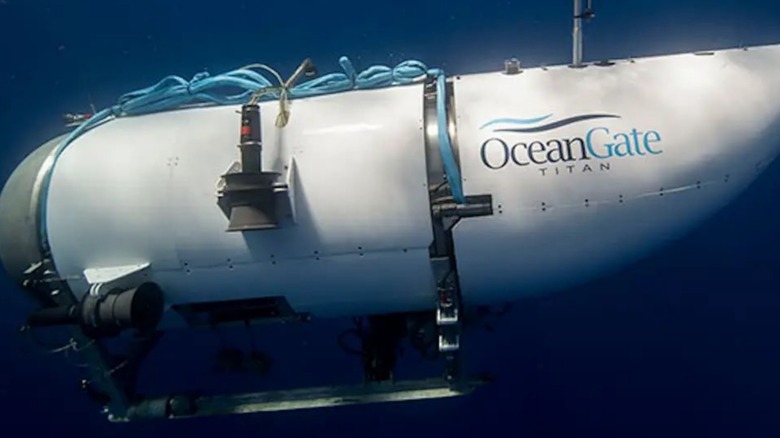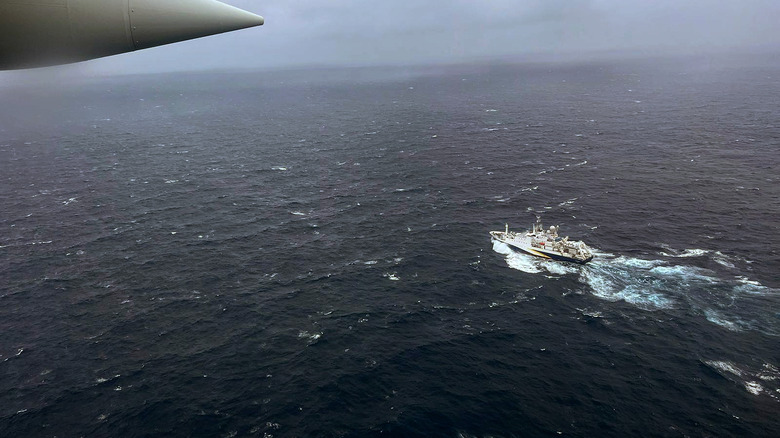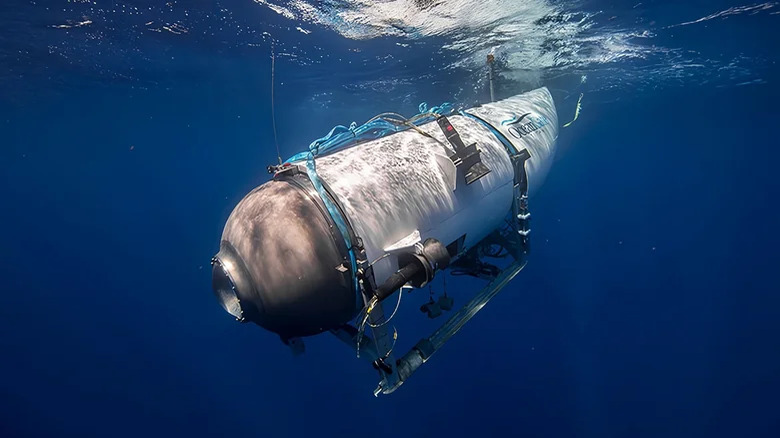More Remains Recovered From Titan Sub Wreckage
The Coast Guard says it has recovered the remaining wreckage from the Titan submersible disaster. The submersible went missing in June, triggering a multi-day international search and rescue operation. Despite some initial hope that the sub and its occupants could be saved, a debris field was eventually discovered. Authorities concluded that the sub had imploded during its descent, and all five passengers on board were killed instantly.
Stockton Rush, the CEO of OceanGate and the man who has shouldered much of the blame for the disaster was on board at the time. Rush is on film bragging about the sub's experimental nature, and dismissing various safety measures and regulations. Also on board were Shahzada and Suleman Dawood, Hamish Harding, and Paul-Henry Nargeolet who was a leading authority on the Titanic wreck. While OceanGate still exists as a company, all "exploration and commercial operations" were suspended shortly after the loss of the Titan sub.
As with the Coast Guard's earlier debris discovery, "human remains" were found in this latest batch of wreckage. Despite the recoveries, the Titan's story is far from over. An internal investigation into exactly what happened is still ongoing, and a public hearing will also be held at some point in the future. Beyond the official inquests, numerous lawsuits may also be filed and fought over the next few years. This latest batch of debris is apparently all that remained of the submersible on the sea bed.
What went wrong on Titan?
We still don't know many of the details surrounding the loss of the Titan submersible, and the recovery of further debris could assist in filling in the gaps. Despite this, we know roughly what happened. The submersible's pressure vessel failed, leading to an almost immediate implosion. The cause of the failure was likely down to the pressure vessel's "unique" construction. Carbon fiber was used to make a large section of the vessel's hull, despite numerous experts warning against it. Pressure vessels are usually made from steel or titanium. Carbon fiber is a fantastic material in many ways, but its main downside is how it fails. Metals will show clear signs of wear and stress before failure, whereas carbon fiber tends to fail quickly and catastrophically.
The vessel's "cigar-like" shape may have also posed problems. Pressure vessels rated for extreme depths tend to be spherical, as that shape is far more robust. The combination of materials could be another point of failure. Blending two different materials is difficult, so the titanium end caps were allegedly glued to the carbon-fiber hull. Finally, the porthole that the vessel's inhabitants could gaze at the wreck through was only rated to around half the depth that the submarine intended to travel to.
Despite all of the red flags, the Titan still managed three trips down to Titanic, and OceanGate's fleet made over 200 dives in total. The repeated trips could have also contributed to the disaster, as the pressure would put stress on the carbon fiber and cause hard-to-detect damage. That damage could quickly lead to catastrophic failure once the pressure built up again.
What are conditions like at the Titanic wreck?
The loss of the Titan, complexity of the attempted rescue operation, and difficulty in recovering the sub's wreckage, all centered around one thing — the harsh conditions of the deep-ocean environment. There are numerous challenges vessels face beneath the waves, such as a lack of light and freezing cold temperatures. However, the main problem that comes with diving is pressure-related.
We experience pressure at sea level, the entirety of Earth's atmosphere is weighing down on us. But the atmosphere is made of various gases, and gas is relatively light, so all of that pressure amounts to 14.7 pounds per square inch. Our bodies are adapted to this, and it isn't something we notice. Water is a lot denser, so you'll experience an additional 14.7 pounds of pressure every 33 feet you dive down. This quickly adds up.
As things stand, no human being has managed to dive below 1090 feet without the aid of a submarine or submersible. Even a submersible may not help much. Many military submarines have a depth rating of less than 1000 feet, and the Titanic sits much deeper. The part of the sea bed Titanic rests on is around 2.5 miles underwater. The pressure at this depth is around 6,000 PSI — so several tons will be pressing on every inch of whatever vessel makes it that far. Titan itself wasn't certified, and was unlikely to receive any certification given its construction methods. In fact, very few subs are rated for that depth, and none of them are made from carbon fiber.


